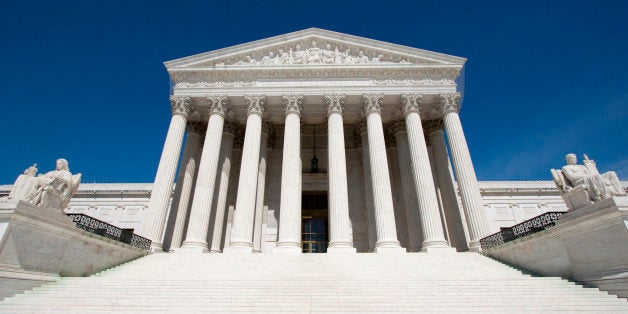
The 1970s saw a changed Supreme Court. The Warren Court had dismantled legal segregation, announced a right to counsel in all criminal cases, given us the Miranda warnings and the Mapp rule on searches and seizures, forever changed the political map with the "one man, one vote" decision, almost done away with defamation in political cases, invented a right to sexual privacy, and much more.
But then it became the Burger Court. Republican presidents, making good on campaign rhetoric, had replaced Black with Powell, Fortas with Blackmun, Douglas with Stevens, Harlan with Rehnquist. Though it may not have changed direction, the Court certainly changed speed. Rehnquist indeed was inclined to dismantle the Brennan-Warren legacy, but the other more or less conservative judges -- White, Stewart, Powell, and (in those days) Blackmun and Stevens -- were cautious, pragmatic.
The results showed. The Court erected landmarks of our constitutional law, what might be called the 70s settlement. Alphabetically, the 1970s saw Abood on forced unionism; Bakke, which has hung on as the case to beat on affirmative action; Buckley, which established the ground rules on campaign finance regulation; Roe (as reaffirmed in Casey) on abortion -- and I have only got to C. There were Furman and Gregg on the death penalty and so on down the alphabet to voting rights.
All these cases shared a common characteristic: they did not quite make sense. By Abood a reluctant worker had to pay her full union dues and only then could demand to get back that part which the union used for political activity -- how realistic was that? Bakke put quotas, explicit racial preferences, and racial balancing ("discrimination for its own sake") out of bounds and yet it allowed taking race into account in college admissions, but only as part of an individualized, "holistic" appraisal in aid of such diversity as would contribute to the classroom experience of all students -- a formula that admissions committees across the country grew adept at manipulating to achieve some modicum of racial balance after all.
In Buckley the Court allowed legislatures to impose rather strict limits on how much money one could give candidates and their campaigns (contributions). But it saw an impermissible violation of free speech in laws that regulated how much could be spent on speech favoring a candidate or a cause (expenditures). This was a metaphysical distinction supposedly made plausible by the availability of public financing of elections (which the Court celebrated), requirements of full, prompt disclosure of the source of all campaign-related speech, and the further requirement that these unlimited expenditures be independent of and uncoordinated with the candidates, lest they count as contributions after all.
And on abortion, Roe (as later refined by Casey) sought to accommodate the state's permissible interest in what it called "future life" with a woman's right to choose by making that latter interest predominant -- but only after the fetus's viability. Prior to fetal viability, it allowed for regulations that did not impose "undue burdens" on the right to choose, an instance of being 100 percent for principle 80 percent of the time.
So each item in this settlement is marked by compromise, doctrinal incoherence and instability. And yet by and large they have served us quite well. Public institutions of all sorts are inhibited from instituting an out-and-out racial spoils system. Political campaigns, in what Rochefoucauld called the homage that vice pays to virtue, used to show some restraint in how they raised money. Governments can affirm their interest in life by not paying for the abortions of which they disapprove and may even propagandize against them -- up to a point.
All-in-all, we have a pretty decent system, but there are purists left and right who would dismantle it. Because it is imperfect and jury-rigged, it is vulnerable to their jibes.
These days it is the right that seems to hold the cards (or votes) on the Supreme Court. A case now before the Court may very well turn unions into powerless voluntary associations. The Chief Justice seems minded to prohibit any consideration of race by public institutions, following his slogan (for which he lacked Justice Kennedy's vote) that, "The way to stop discrimination on the basis of race is to stop discriminating on the basis of race."
As for the Buckley system, the Court has already gone a long way toward dismantling that settlement. In 2014 a bare majority of the Court declared a long-standing and important limit on campaign contributions unconstitutional. And in 2011 in Arizona Free Enterprise Club v. Bennett the same majority declared unconstitutional the only way that states and the federal government might make public financing of elections at all attractive to candidates. Elsewhere, the Republican Congress inserted a provision in the recent omnibus funding bill barring the SEC from mandating full disclosure of corporate political contributions.
Finally, cases from Texas before the Court this term will show whether states will be allowed effectively to drive abortion providers out of business in the guise of regulating them.
In the end we might have a body of constitutional law easier to understand and predict, but harder to live with.
As Albany put it in Lear: "striving to better, oft we mar what's well."
Charles Fried teaches constitutional law at Harvard Law School. He was Solicitor General of the United States, 1985-1989.